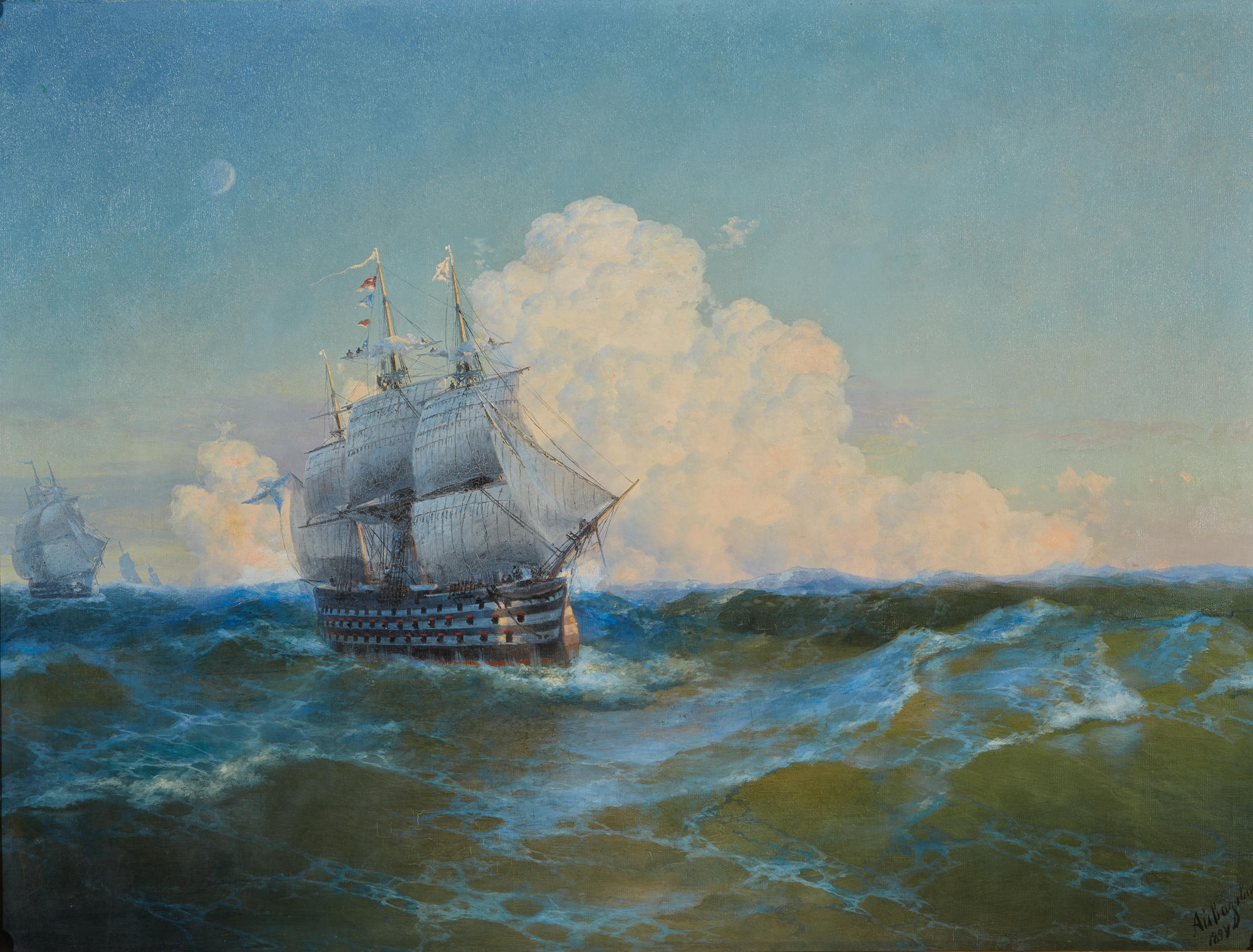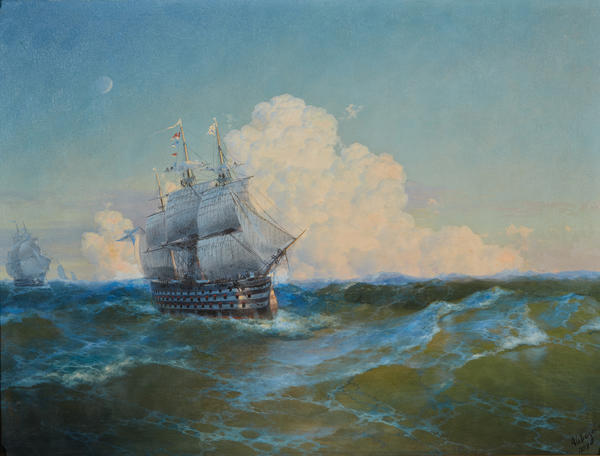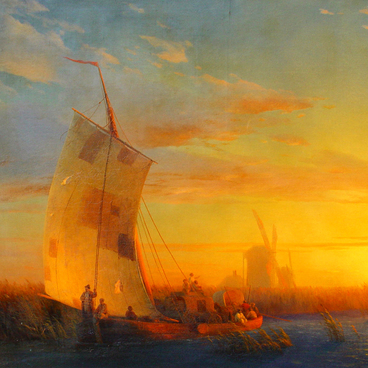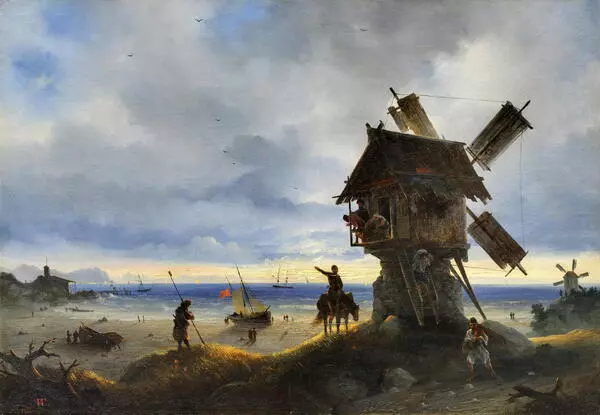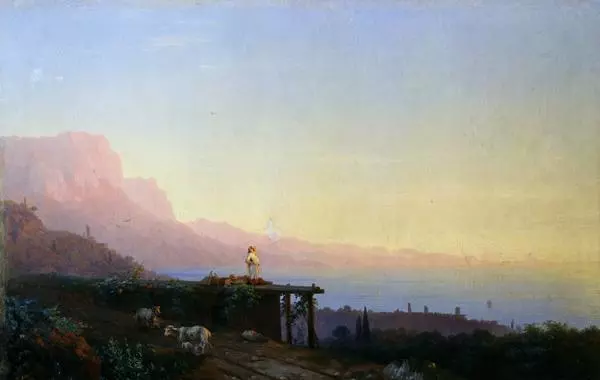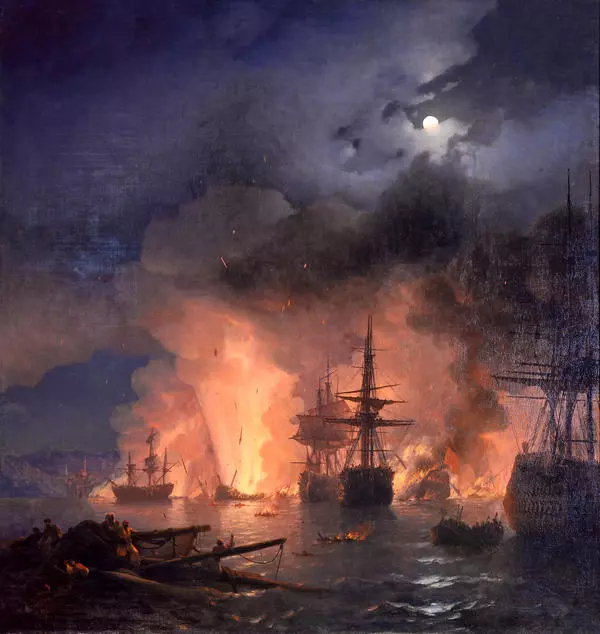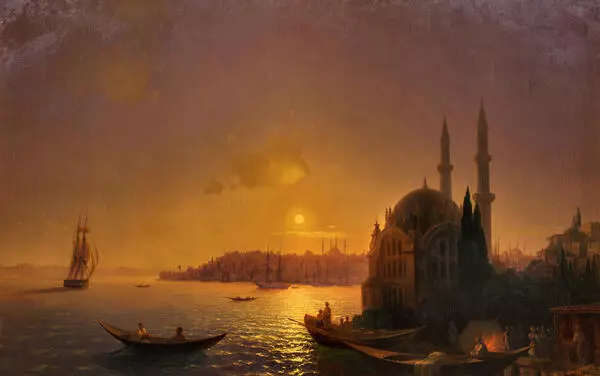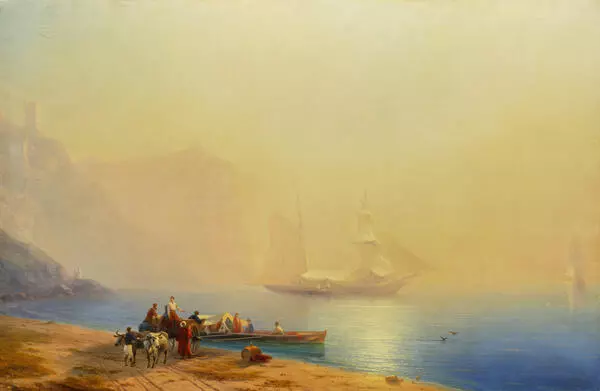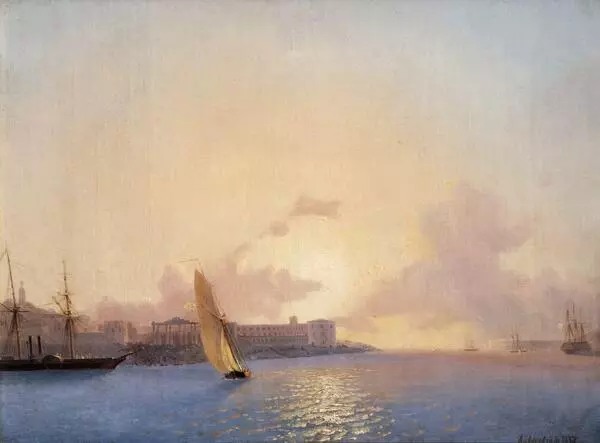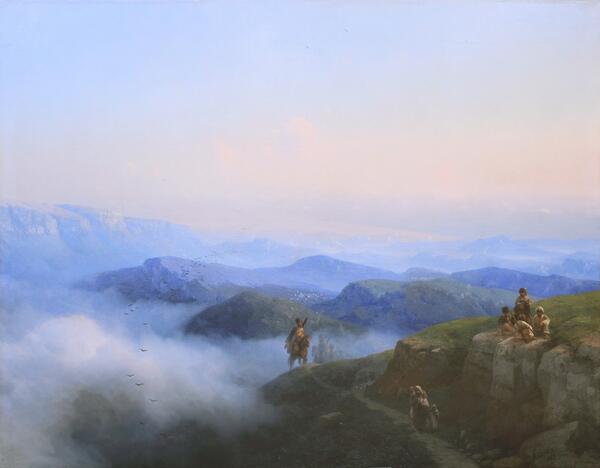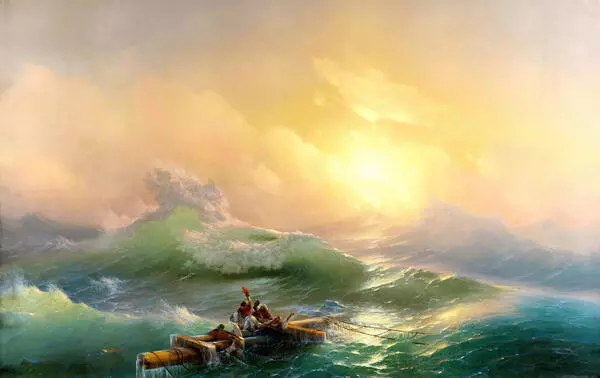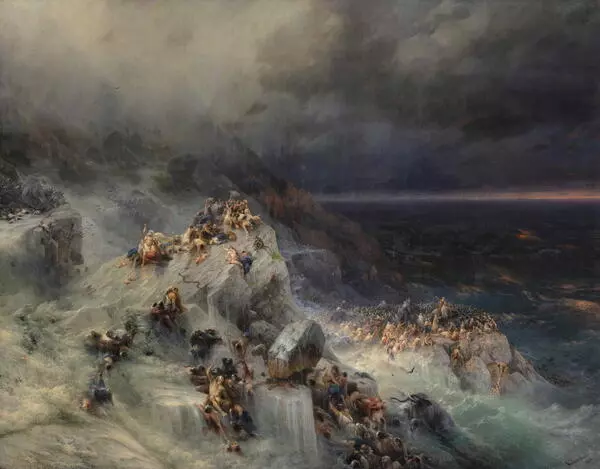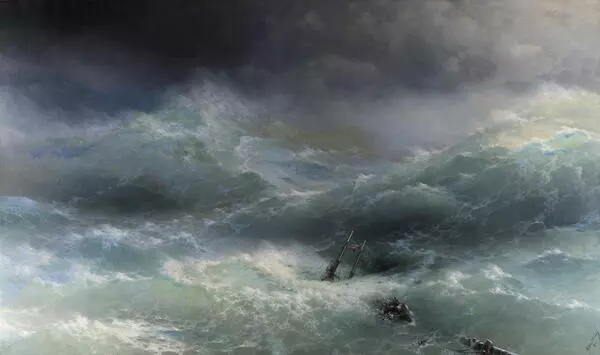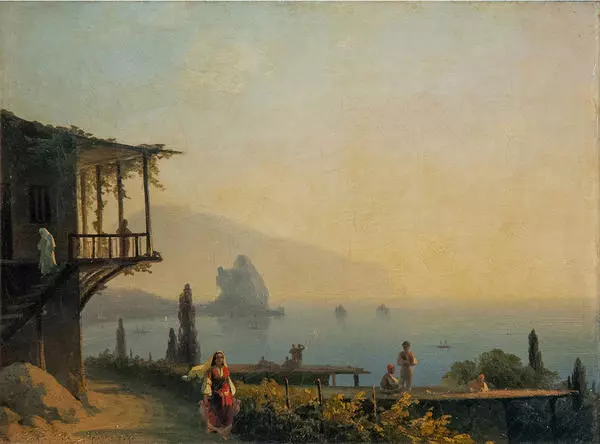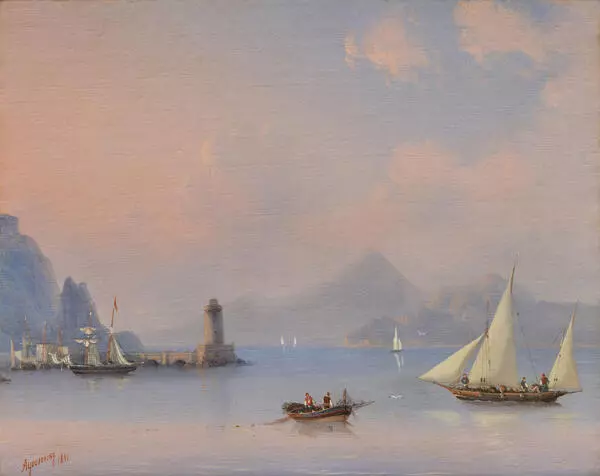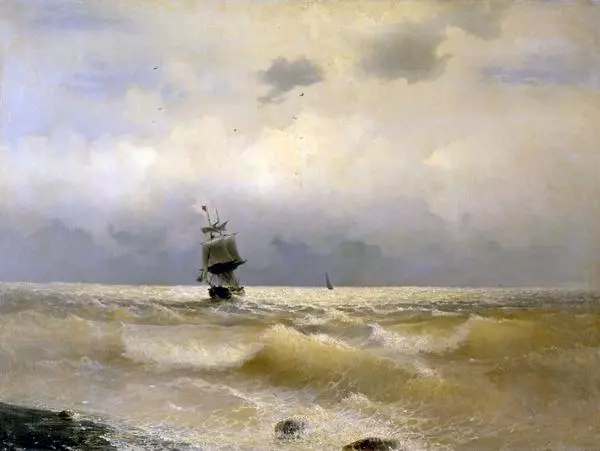Ivan Aivazovsky was the principal painter of the Main Headquarters of the Navy and depicted nearly all the most important events in which the Navy was involved. Through his entire life, the artist not only glorified the power of Russian arms, but he also participated in expeditions of warships. Those voyages made Aivazovsky the most favorite artist of the Navy and let him develop a good rapport with many outstanding naval commanders. They, in turn, esteemed the painter very highly (‘We are proud, Ivan Konstantinovich, to have you in our midst…’). Aivazovsky was well-acquainted with distinguished admirals, such as Pavel Nakhimov, Mikhail Lazarev and Vladimir Kornilov. The painter was even on friendly terms with many of them, and frequently portrayed them in his drawings and paintings.
In 1846, Aivazovsky celebrated a decade of his artistic career. The date was very important for the painter, for many reasons. He finally came back to his native town after a long journey and opened the first show of his pictures in Feodosia; the poster read, ‘The exhibition is open for all classes’. At a time when art shows were held only at the St. Petersburg Academy of Arts, and there was not a single museum in all Russia that was accessible to the general public, the artist advocated a democratic approach in promoting art. Admiral Kornilov made an exceptional gift to the painter: He arrived from Sevastopol in Feodosia on board the ship The Twelve Apostles accompanied by five other warships, just to greet Aivazovsky.
The tableau The Ship The Twelve Apostles was painted in memory of that glorious ship. She was launched in 1841, and was part of the Black Sea Fleet, with Kornilov as her first captain. Aivazovsky showed the battleship under full sail in the open sea. Above the horizon, we see a gigantic and very picturesque cloud; it was a composition trick often used by the artist in order to make his paintings more vivid. Aivazovsky admired Kornilov’s ship and considered her to be the pride and glory of the Russian Navy. Therefore, on this canvas, we contemplate the ship’s stately shape in bright and flashy lighting. High waves are driving the vessel forward. The ship The Twelve Apostles played an important role during the Crimean War and was sunk in 1855.
In 1846, Aivazovsky celebrated a decade of his artistic career. The date was very important for the painter, for many reasons. He finally came back to his native town after a long journey and opened the first show of his pictures in Feodosia; the poster read, ‘The exhibition is open for all classes’. At a time when art shows were held only at the St. Petersburg Academy of Arts, and there was not a single museum in all Russia that was accessible to the general public, the artist advocated a democratic approach in promoting art. Admiral Kornilov made an exceptional gift to the painter: He arrived from Sevastopol in Feodosia on board the ship The Twelve Apostles accompanied by five other warships, just to greet Aivazovsky.
The tableau The Ship The Twelve Apostles was painted in memory of that glorious ship. She was launched in 1841, and was part of the Black Sea Fleet, with Kornilov as her first captain. Aivazovsky showed the battleship under full sail in the open sea. Above the horizon, we see a gigantic and very picturesque cloud; it was a composition trick often used by the artist in order to make his paintings more vivid. Aivazovsky admired Kornilov’s ship and considered her to be the pride and glory of the Russian Navy. Therefore, on this canvas, we contemplate the ship’s stately shape in bright and flashy lighting. High waves are driving the vessel forward. The ship The Twelve Apostles played an important role during the Crimean War and was sunk in 1855.
